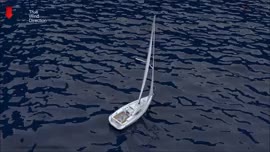 Click here to view media kit. |
Close Hauled X Clipper Canoes - Visit Our Website Head Office Clipper Canoes Box 115, 1717 Salton Rd Abbotsford British Columbia Canada, V2T 6Z5
Phone: (604) 853-9320 Fax: (604) 852-6933 Toll Free: (866) 644-8111 Email: Contact Web Site: http://www.clippercanoes.com/
Company Profile: Every canoe design is a combination of several different elements of design. Each element has advantages and disadvantages. One of the most important design elements in canoe building is the overall length of the canoe. The longer a canoe is, the faster it will paddle and the straighter it will track, provided the width remains proportional. The longer canoe will have a greater capacity, but will be harder to maneuver. Canoes designed for whitewater need to be very maneuverable. They will be shorter than canoes designed for general recreational use and have greater rocker. Rocker is the amount the canoe’s ends rise above the bottom center of the hull. The width of the hull at the 4" waterline will influence a canoe’s stability, cruising speed and load capacity. Wider canoes will displace more water and will have more resistance as they pass through the water. | |

